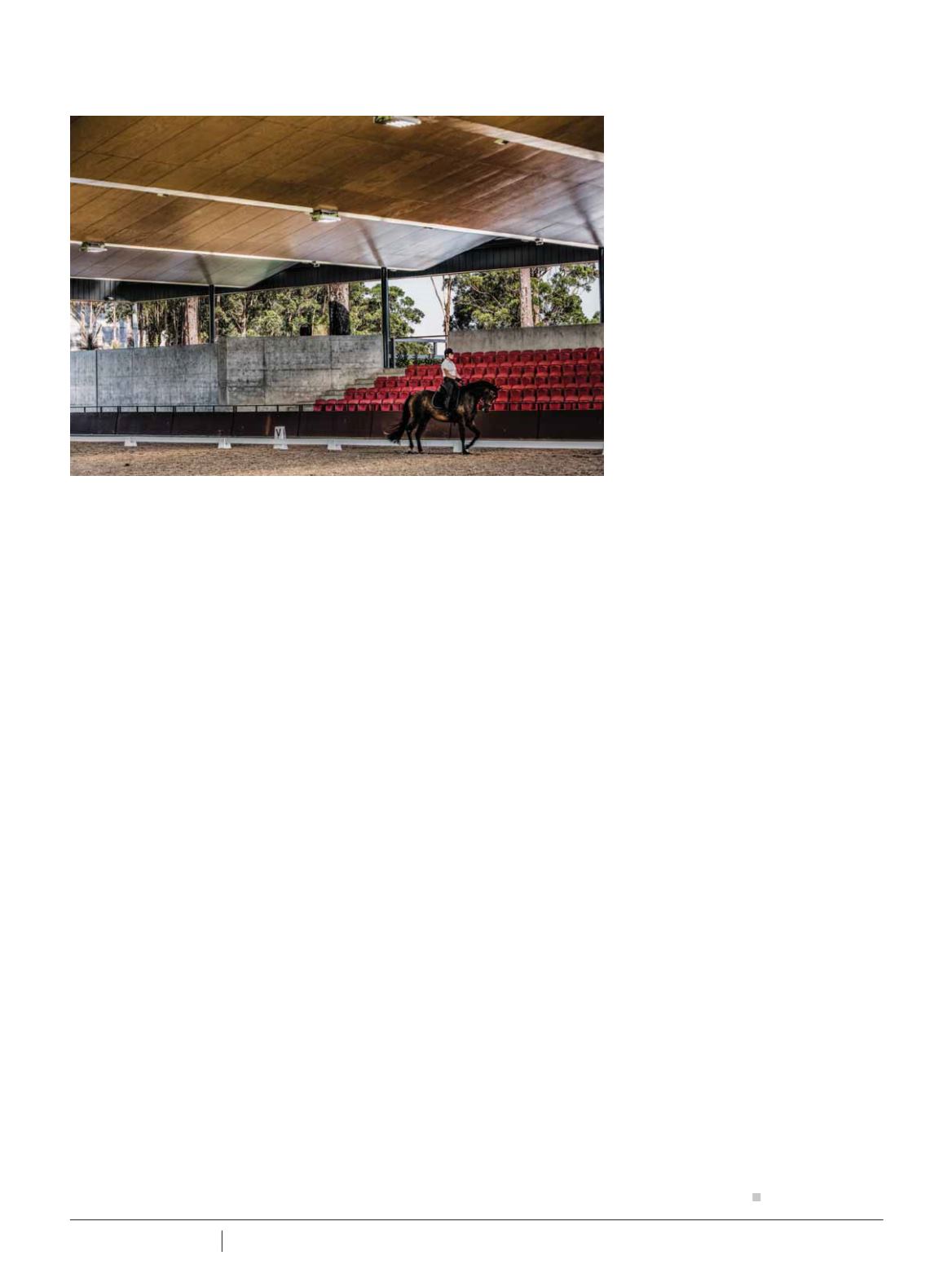

3 0
PLUMBING CONNECTION Summer 2017
development of the equestrian facility
further storage tanks were installed,
including 1.8 million litres of in-ground
tanks under the grand prix arena.
Further water storage is provided at
individual buildings typically of 100,000
– 200,000 litre capacities, plus a
number of dams around the paddocks to
supply the water troughs.
“Rainwater is collected from the
Colorbond roof on the covered arena – a
catchment area of 6,200m
2
, which is
potable. It is UV filtered and sterilised
for human consumption. Once full, those
tanks overflow into the non-potable
tanks which are used for stock drinking,
washing down the horses, cleaning the
stables and irrigation. Water from the
copper roofs is re-directed away from
potable sources.”
“The water collected from the copper
roofs is still compliant as potable
drinking water,” says Josh Pirotta,
services manager with Vital Design
Solutions. “As the roof ages, the salty
sea air will increase the level of copper
ions that are generated, to a point
that is no longer acceptable for human
consumption. So rather than face that
complication in five years, the decision
was made to re-direct that water to
non-potable storage.”
The whole system is pumped from
three main pumping stations, capable of
EQUESTRIAN CENTRE SPLENDOUR
The sawtooth roof design reduces shadows on the horses while providing an
optimal orientation for solar panels.
up to 1000 litres per minute, contained
within the basement as much for
aesthetics as for maintenance. In
essence, Vital Design Solutions opted
to run two independent pipe works for
potable and non-potable water. As a
consequence the biggest challenge
was to prevent cross-contamination
between the two streams.
To manage stormwater, there are
three systems in place. The first is
essentially the potable water from the
Colorbond roof, the second handles
the non-potable water from the
copper roofs, and the third is the civil
stormwater. The civil stormwater
collects water from surfaces such
as the roads, pathways and horse
washdown. It is then directed into a
bio-retention basin to improve the
water quality using vegetation before
it reaches the downstream water
systems at the bottom of the property.
Horse waste solids are recovered
and composted, broken down and
macerated for use as fertiliser. The
septic system for human waste is based
on an envirocycle system which aerates
waste in a similar concept to a small
tank system.
“Of the water used, about three-
quarters is non-potable for applications
such as garden irrigation and keeping
the grass in the holding yards green for
horse grazing,” says Josh. “We have
created an overflow daisy chain system
that means that tanks overflow into
the next. Pumps can then redirect that
water to wherever we need it around the
property. The addition of a bore means
we have another option to fill tanks
should we need it.”
Other water uses on site include
an evaporative misting system in
the stables to cool the horses in hot
weather, the training pool and hot
water systems. The forthcoming
160 stockyards will have their own
standalone water supply pipe work.
“We have designed the system to
be as low maintenance as possible,
including automatic backwashing
filtration if there is too much friction
across the filter, which reverses the
flow of water and discharges all the
wastewater out to a drain,” says Josh.
“With alarms, we can monitor what is
happening anywhere on site.”
THE NEXT PROJECT..
Since the facility opened, a further
160 stockyards are under construction
for eventers to house their horses for
equestrian events. The scale of this is
particularly challenging.
For the contractors, it requires
a new level of thinking. For Neil, he
will need to develop a cutting-edge
method of power supply – the grid
simply won’t cope. He estimates he will
need about 500kW of solar, 2MW of
stored energy (Lithium ion battery is
the current leader with conversations
underway with Magellan, Tesla and Flow
Technology) and 3MW of stand-by diesel
generation systems.
Josh needs to re-think how much
water will be needed for washdown,
drinking, cleaning and misting, and
what capacity hot water services. For
DJ, the lighting will still need to be in
keeping with architectural design but
particularly mindful of equine light
tolerances.
The project while challenging has
been rewarding for all the contractors
involved. For those in the equestrian
industry, the development of Willinga
Park as a world-class facility has been
a welcome addition to the international
circuit of eventing.
















